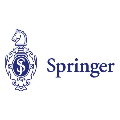In this paper, we present a low-complexity recursive approach for massive and scalable code-domain nonorthogonal multiple access (NOMA) with applications to emerging low-capacity scenarios. The problem definition in this paper is inspired by three major requirements of the next generations of wireless networks. Firstly, the proposed scheme is particularly beneficial in low-capacity regimes which is important in practical scenarios of utmost interest such as the Internet-of-Things (IoT) and massive machine-type communication (mMTC). Secondly, we employ code-domain NOMA to efficiently share the scarce common resources among the users. Finally, the proposed recursive approach enables code-domain NOMA with low-complexity detection algorithms that are scalable with the number of users to satisfy the requirements of massive connectivity. To this end, we propose a novel encoding and decoding scheme for code-domain NOMA based on factorizing the pattern matrix, for assigning the available resource elements to the users, as the Kronecker product of several smaller factor matrices. As a result, both the pattern matrix design at the transmitter side and the mixed symbols' detection at the receiver side can be performed over matrices with dimensions that are much smaller than the overall pattern matrix. Consequently, this leads to significant reduction in both the complexity and the latency of the detection. We present the detection algorithm for the general case of factor matrices. The proposed algorithm involves several recursions each involving certain sets of equations corresponding to a certain factor matrix. We then characterize the system performance in terms of average sum rate, latency, and detection complexity. Our latency and complexity analysis confirm the superiority of our proposed scheme in enabling large pattern matrices.
翻译:在本文中,我们对大规模且可扩缩的代码-非正方形多重访问(NOMA)提出了一种低复杂性的递归方法,该方法适用于新出现的低容量假设情景。本文件中的问题定义是由下一代无线网络的三大要求启发的。首先,拟议办法对低容量制度特别有利,这对于互联网-Tings(IoT)和大规模机器型通信(MMTC)等最受关注的实际情景来说非常重要。第二,我们使用代码-domain NOMA来有效分享用户之间稀缺的共同资源。最后,拟议的递归方法使代码-us-ma(NOMA)能够以低兼容性模式的检测模式与用户数目的大规模无线连接网络网络网络连接。为此,我们建议根据模式矩阵的因子化因素,为用户分配可用的资源要素,因为Kronerceral-deal NOMA(NOMA) 能够有效分享用户之间稀缺的共同资源。最后,拟议的递归正矩阵方法使发送器-drical NOMA(NOMA)能够以低兼容性模式检测模式的算算算算算算出与用户的大小。我们当前测底基质测测测测算中,因此,我们在测测测算的测算中,我们测算出某些基基基号的测算法系测算法系的测算法系的测算法系的测算。


